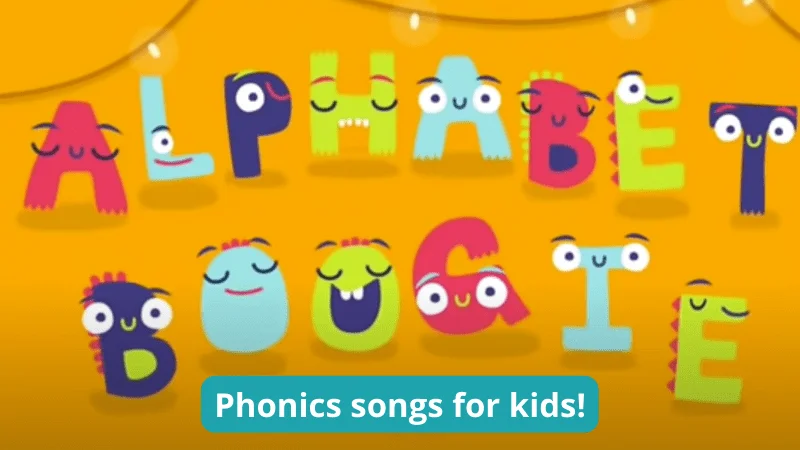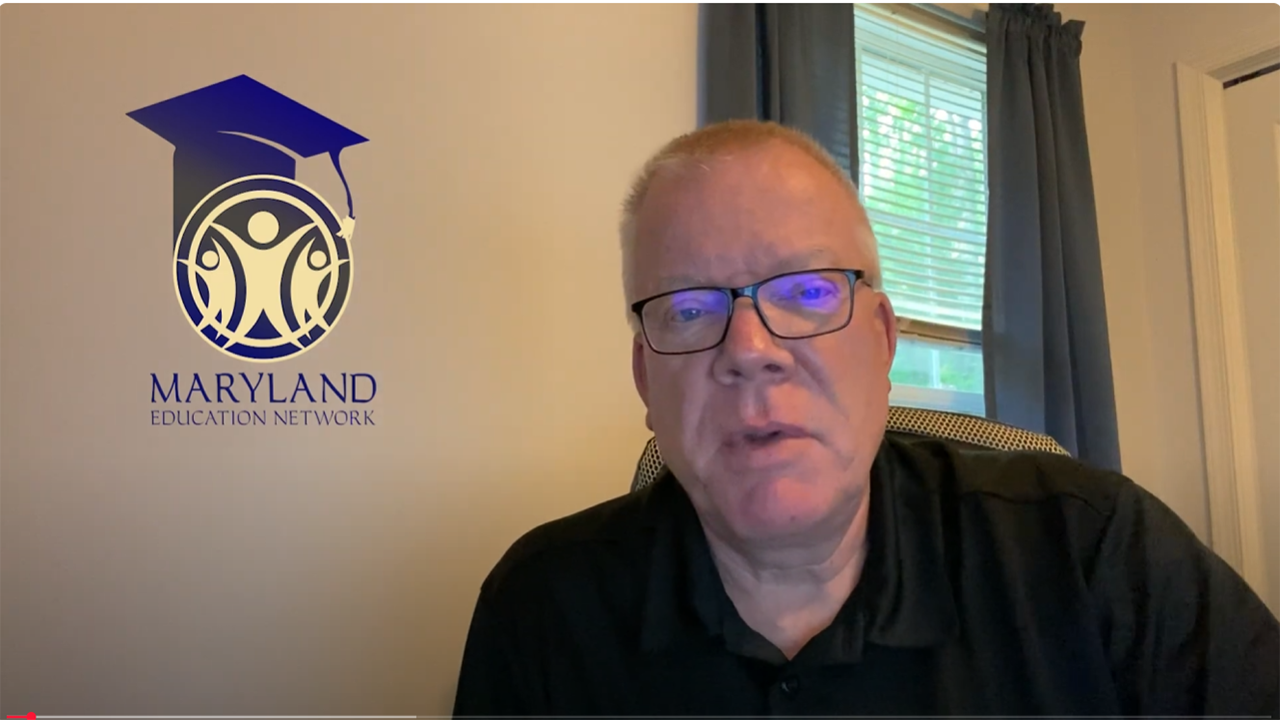

33 Fun Phonics Activities and Games for Early Readers
Phonics is one of the five essential components of the science of reading, along with phonemic awareness, fluency, vocabulary, and reading comprehension. Phonics activities help young learners break words into their constituent sounds so they build their literacy skills, bit by bit. Here are some of our favorite ways to teach these key skills.
1. Sing a phonics song
Singing songs is such a fun and effective way to learn! Kids will love to watch and sing along, and might not even realize they’re learning along the way.
Learn more: 15 Phonics Songs for Kids at We Are Teachers
2. Color in the beginning sounds

Most kids start learning phonics by mastering the beginning sounds of words. Have kids color in the words that start with the matching sound on these cute and free worksheets.
Learn more: Beginning Sounds Coloring Pages at The Measured Mom
3. Use Google Slides

Google Slides has tons of fun phonics activities kids can use in the classroom or at home.
Learn more: 18 Interactive Google Slides for Teaching Phonics and Sight Words at We Are Teachers
4. Hang phonics anchor charts

When it comes to phonics, there’s a lot to learn. Post anchor charts around the room to help kids remember important rules like silent E, vowel blends, and hard and soft C and G.
Learn more: 20 Perfect Anchor Charts for Teaching Phonics and Blends at We Are Teachers
5. Build words with a chart of beginning sounds

Grab this free printable chart and print out copies for your students to use with their phonics activities. There’s a version for rimes too.
Learn more: Beginning Sounds Chart at This Reading Mama
[contextly_auto_sidebar]
6. Learn digraphs with clip wheels

Combine fine motor skills practice with phonics work with these free beginning digraph wheels. Tip: Add small dots on the back to mark the right answers so kids can self-correct their work.
Learn more: Digraph Wheels at Playdough to Plato
7. Slap the letter sounds

Sounding out words letter by letter is a lot more fun when you slap each letter with a flyswatter! This is a great idea for active learners.
Learn more: Letter Sound Slap at Frugal Fun for Boys and Girls
8. Walk the word

This one will also keep active learners moving and happy! Write words in sidewalk chalk, then walk (or hop or skip) along them, sounding the word out along the way. Simple but fun!
Learn more: Gross Motor Phonics Game: Walk the Word at Coffee Cups and Crayons
9. Fill in the missing letters

This active game combines a scavenger hunt with phonics! Hide sticky notes around the room with various vowels. Then, write CVC words with the vowels missing. Have kids hunt for the missing sounds and fill them in. Fun!
Learn more: Missing Sounds Reading Activity at Busy Toddler
10. Just swap one letter

As students move from box to box, they change one letter to make the new word represented by the picture. They might need to change the first, middle, or last letter, so it’s a real challenge!
Learn more: Just Swap One at This Reading Mama
11. Make magic spoons

Pick up a pack of plastic spoons at the dollar store, then use them to practice building words by combining beginning sounds with word endings.
Learn more: Activities To Teach Phonics and Math at Education to the Core
12. Toss and blend with plastic cups

Grab a stack of plastic cups and some Ping-Pong balls for this fun phonics game. Label the cups with different letter blends and set them out (tape them down if they tend to fall over). Kids toss a ball into a cup, then come up with a word that uses that letter blend to earn a point.
Learn more: Toss and Blend at Education.com
13. Flip the pages

Divide the pages of a small notebook into thirds, then write letters on each page. Flip them to form new words.
Learn more: Phoneme Substitution Activities at Tickled Pink in Primary
14. Mix and match cups to make words

If you’ve still got some cups left over, label them with more letters or letter blends, then use them to mix and match words. This is an especially fun way to work on CVC and sight words.
Learn more: CVC Cups at Inspired Elementary
15. Hack pool noodles into phonics tools

This has got to be one of our favorite phonics activities. Cut a pool noodle into pieces and label it with letters. Then stack and spin for learning fun!
Learn more: Pool Noodle Phonics at We Are Teachers
16. Spin and rhyme

Here’s a different spin (pun intended!) on Pool Noodle Phonics. All you need is a cardboard tube, a wire pants hanger, scissors, and a marker to make this fun DIY rhyming activity.
Learn more: Spin and Rhyme at No Time for Flash Cards
17. Make some phonics cubes

Slide the free printable inserts into a set of photo cubes, then roll until you get the correct combination of letter and word ending.
Learn more: Phonics Cubes at This Reading Mama
18. Use paint stirrers to make word pull-outs

These clever phonics tools are easy to make using paint stirrer sticks and paper towel tubes. Simply slide the stick in and out to make new words!
Learn more: Word Family Pull-Out Activity at I Can Teach My Child
19. Play a flip-top phonics game

If you go through packages of wipes like most parents do, you’ll appreciate this idea. Save the flip tops and use them for DIY phonics activities.
Learn more: Flip Top Phonics Games for Kids at No Time for Flash Cards
20. Use a pocket chart for phonics activities

Here’s another reason teachers love pocket charts: They’re great for phonics centers. Sort and match cards to practice beginning sounds, blends, short and long vowels, and so much more.
Learn more: Short A Activities and Resources at Miss Giraffe’s Class
21. Compete at Blends and Digraphs Bingo

Every kid loves a good game of bingo! Snag these free printable bingo cards and use them to practice blends and digraphs.
Learn more: Blends and Digraph Bingo at The Measured Mom
22. Toss some phonics water balloons

This one almost seems too fun to count as learning! Tape up beginning sounds, then toss water balloons to complete the words.
Learn more: Water Balloon Phonics at Mess for Less
23. Race to the Top with blends and digraphs

Play this free printable game to practice consonant blends. Toss a chip onto the board and say that word out loud. Then move the counter for the correct blend up one space. First to the top wins!
Learn more: Blends and Digraphs Games at This Reading Mama
24. Try locks and keys to learn phonics

This self-correcting phonics activity is also a good way to practice fine motor skills … and a lot of fun to boot! Label keys with beginning sounds and locks with word endings, then match them up and try the key to see if you’re right.
Learn more: Unlock and Learn Game at We Are Teachers
25. Play Phonogram Connect 4

Draw a word card and find an open phonogram slot on the board. Your goal is to get four in a row!
Learn more: Phonogram Connect Four at Mrs. T’s First Grade Class
26. Teach them the Soft C & G Chant

Simple little chants like this will help kids remember some of those confusing language rules. Pair it with other favorites like “I before E, except after C.”
Learn more: Soft C and G at This Reading Mama
27. Mix, color, and spell

We can’t get enough of games that reinforce CVC words with short vowels—it’s such an important early literacy skill! Practice identifying and distinguishing between vowels by coloring in the middle sound from pictures of CVC words.
Learn more: Teaching CVC Words at Susan Jones Teaching
28. Write the Room: Digraphs

Use this fun little letter scavenger hunt to move around the room to search for pictures with digraphs. First, mark the ones you find with a dot marker and then use another sheet to write the digraphs.
Learn more: Beginning Digraphs Write the Room at ABC’s of Literacy
29. Use disappearing ink for letter formation

One of the first keys to early reading success is letter identification and formation. Keep it fresh by using “disappearing ink” (aka water) so students have to trace letters multiple times to prevent them from disappearing too fast. With so few materials and such high engagement, what’s not to love?
Learn more: 3 Simple Play-Based Phonics Activities at Research and Play
30. Do word sorts

Word sorts are great for comparing word patterns that make the same sound, like vowel teams. They can also help reinforce so many different phonics skills, making them the perfect activity that can be easy differentiated for learners of all stages.
Learn more: Using Word Sorts for Phonics Instruction at Mrs. Winter’s Bliss
31. Roll and Read

Roll a die and read the word from the corresponding column. Play with a partner or do it solo by coloring in the words as you read them.
Learn more: Lesson 79 Roll and Read at UFLI. While you’re there, check out the UFLI free lesson resources, which include decodable passages and games for almost every phonics skill!
32. Roll letter dice

A perfect DIY idea for old blocks! Use three blocks and write consonants on two of them and vowels on the other. Have some fun rolling and blending CVC words.
Learn more: DIY Phonics Games at Early Impact Learning
33. Sort syllable types

If you are teaching the different syllable types, this word sort helps students practice their knowledge of the six types and shows you what they know.
Learn more: Six-Way Syllable Sort at Florida Center for Reading Research. Also, check out the many other phonics resources available by grade level: Kindergarten and First Grade or Second and Third Grades.
Looking for more phonics activities? Learn What Makes a Good Decodable Text here.
Get all the latest teaching tips and ideas straight to your inbox when you sign up for our free newsletters!
Dig Deeper With Our Longreads
Newsletter Sign up to get our best longform features, investigations, and thought-provoking essays, in your inbox every Sunday.
The MEN was founded by John Huber in the fall of 2020. It was founded to provide a platform for expert opinion and commentary on current issues that directly or indirectly affect education. All opinions are valued and accepted providing they are expressed in a professional manner. The Maryland Education Network consists of Blogs, Videos, and other interaction among the K-12 community.
Recent Video
Recent Articles
No results found.







